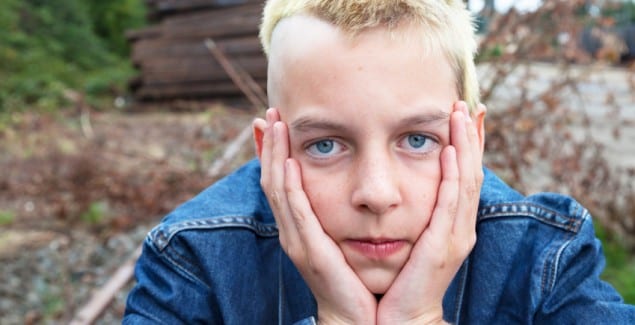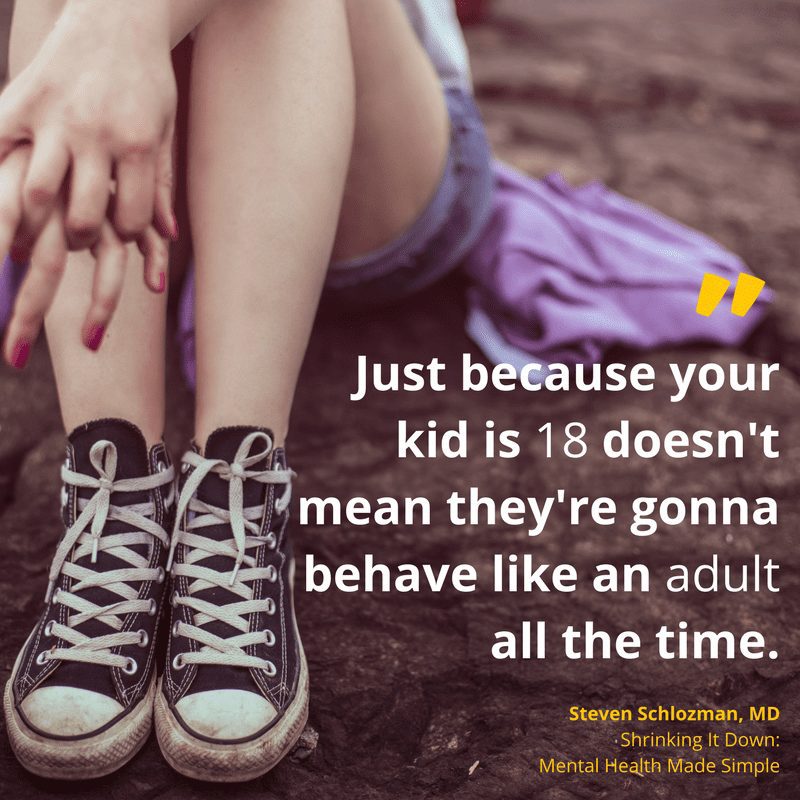Are Teenagers Responsible?

Posted in: Hot Topics
Topics: Child + Adolescent Development
Ask any parent of a teen whether his or her child is responsible, and a wry smile will appear.
If you could see the internal images and memories behind that smile, they would look like this: wet towels on the floor, a car left without gas on a workday morning, a forgotten homework assignment, a broken curfew.
Responsible? Of course not! Generally, most kids expect parents to take care of these mundane duties. And, for the most part, they do. But what if the poor planning and irresponsibility involve high stakes and high risks? What if they involve life and death? The same parents who give knowing smiles also stay awake nights worrying that their adolescent and young adult children will drink and drive—or worse. The Jimmy Moran scenario is only the high-risk version of the small irresponsibilities that these young people demonstrate every day.
Why design such a foolhardy species? Why are young human beings prone to volatile emotions, thrill seeking and a seeming inability to think about the long-term consequences of what they do? Though it seems paradoxical, even counter to survival of the species (from an evolutionary standpoint), this is just what we need them to do.
Evolutionary biologists understand that propagation of the species is the powerful imperative behind risk-taking. The young of a species have to bravely venture away from a comfortable nest with reliable food and nurturing to seek mates (ideally with a new gene pool), conquer obstacles, and feel secure and invincible in hostile terrain.
How would you design such a brain that sets the youngster up to confront these challenges? You would make it temporarily less sensitive to danger, and more responsive to rewards and thrills. Modern neuroscience is demonstrating that the teen behavior we all observe has a brain signature that can be scanned—pictures that show the exaggerated preferences that teenage brains have for novelty, risk and immediate rewards. Their frontal lobes, the regions that synthesize and organize information, that consider the consequences of actions and serve to inhibit impulsive behavior, are not fully developed—nor will they be until the early to mid 20s. That, in a nutshell, is the teenage brain, designed to respond to the “siren song” of the world’s temptations. But, that’s not the main story. In fact, the density of both neurons and connections among neurons in the frontal lobe of a teenager is equal to, and most often greater than, what the frontal lobes of more clearly thinking adults enjoy. The difference, then, is in the wiring.
The ability for the teen to listen to his frontal lobe is hampered by incomplete insulation. What does this mean? Think of all those connections in the brain as electrical wires. The teen brain is insulated from the ground up. That means that the frontal lobe is the last region to become appropriately grounded. The more primitive regions of the brain, the ones that make us take risks? Those communicate fluidly, and with impressive precision. The frontal lobe is an old Plymouth compared to the Porsche that rages for risk—it doesn’t stand a chance in the quick and impulsive world of the teen. In fact, it’s why we try to slow teens down in order to allow them to make good decisions. The slower pace allows the frontal lobe to catch up. That is all well and good for survival of the species as a whole, but how are we to handle these juvenile traits in a society where the rule of law maintains the social order, and individuals are held responsible for what they do? Some of the “rewards” that are so compelling for teen brains are social plagues—drugs of abuse, gang affiliations, aggressive provocations.
What should we do in a case like Jimmy’s, where an adolescent causes grievous harm to an innocent adult? In a series of cases between 2005 and 2012, the United States Supreme Court grappled with just these issues, and came out with a new framework. Incorporating neuroscientific and behavioral evidence demonstrating that the adolescent brain typically lacks the impulse control, planning and risk avoidance capacities of the adult brain, it determined that capital punishment of juveniles is cruel and unusual—and therefore unconstitutional. The Supreme Court also said that a juvenile can only be sentenced to life without the possibility of parole for crimes of homicide, and even then, it must determined on a case-by-case basis, with individual assessments of the particular juvenile’s maturity.
What might be important to discuss at such a hearing on juvenile legal responsibility? The issues elegantly raised in Jimmy’s trial. The judge and the jury might learn about the vulnerabilities of all adolescent brains, and then examine both the brain and behavior of the teen before the court. Most teenagers are behavioral risk takers, but were there any other circumstances that heightened or ameliorated this risk?
Jimmy had deficits of attention that made school extremely difficult, and a street life the path of least resistance. Furthermore, he had particular problems with processing information rapidly, and was inherently socially immature—both factors leading to his vulnerability of being manipulated and subject to peer pressure. He also had traumatic experiences at home, which made violence seem an acceptable solution for frustration and anger. Both his mother and he were abused, and he developed post-traumatic stress disorder (PTSD), an anxiety condition that makes a child more prone to feeling helpless and vulnerable. To compound matters, the situation at home—his attachment to an abused mother, and a longing for acceptance from a disabled father, resulted in an urgent but unrealistic plan to help provide financially for the family. His eventual depression and cocaine use compounded his difficulty with thoughtful, responsible decision-making.
Individuated sentence hearings in place of mandatory minimum sentences can also be a two-edged sword, as a judge might find that a particular teenager had ample capacity to resist certain temptations, but chose not to—a finding that might increase culpability. On the other hand, the judge does have an ability to take into account many mitigating forces, such as the ones we see with Jimmy Moran. Finally, even a teenager with a more mature frontal lobe can become disinhibited by drug or alcohol use—the single greatest accelerant for irresponsibility in teens and adults.
If you use this model, you can do justice in the setting of a terrible crime, and see obvious points of intervention to prevent violence in the future. Importantly, each specific clinical problem of Jimmy’s can be helped by good, comprehensive treatment: attention difficulties, learning weaknesses, family problems (domestic violence and economic burdens), PTSD, depression and substance use.
By targeting violence prevention in and outside the home, offering early treatment for psychiatric conditions, and implementing strategies for substance abuse prevention, we can take advantage of the inherent rehabilitation potential in these vulnerable teen brains before tragedy strikes.
This is the last in a series of blog posts about the teenage brain written to accompany a two-part broadcast on PBS, “Brains on Trial with Alan Alda.”


 Share
Share Tweet
Tweet






